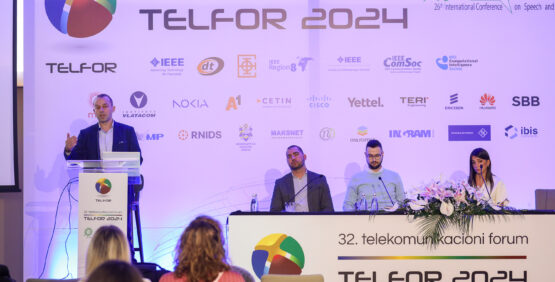
Smart CapEx: Minimize your cost, maximize your value

|
Author: Milutin Davidovic |
|---|
April 19, 2021
My grandpa used to say “It’s easy to be good in good times, the heroes are recognized in hardship”. This is exactly what is going on in the telecom world right now. Network resources as well as operators’ budgets are simultaneously becoming more limited as the user’s/application’s demands keep growing exponentially.
This challenges mobile operators to plan their networks in a smarter way. At the same time, pressure is on Radio Access Network (RAN) vendors to design and tailor their products to specific needs, that may vary from market to market.
To face these challenges, you need to know your numbers, or in other words the network and the whole ecosystem’s behavior should be monitored constantly. With a data tsunami that is still in place and exponential traffic growth, it is critical to be ahead of the curve and anticipate bottlenecks before they happen. Furthermore, planning network capacity proactively and evaluating available solutions is necessary.
Monitoring network performance is nothing new, right? It is something that all operators have been doing for years – observing typical Key Performance Indicators (KPIs) through Performance Management (PM) system.
So, what is the issue here?
Available PM counters typically do a great job when it comes to resource utilization indicators, but in most of the cases they are focused on performance of a certain piece of the network equipment. Another question is – how good are they at measuring real user experience that requires an end-to-end view? The most important user experience metric is downlink throughput.
The typical KPIs that are available today to address this area provide information only as an average per observed cell. This limits the analysis, as the main objective of network design and optimization is to secure good enough level of performance for the users in the most challenging radio conditions, typically at the cell edge. For such needs, average performance in the observed cell carries insufficient level of information.
Furthermore, throughput counters may provide pessimistic values in case of bursty, chatty traffic – when the buffer is not full, and User Equipment (UE) is not able to fully utilize bandwidth potential. Last but not the least, in complex multilayer scenario, counters collected on upper protocols, such as Packet Data Convergence Protocol (PDCP) or Radio Link Control (RLC), are not aware if the traffic happened in primary or secondary cell which affects their accuracy.
OK, how to overcome these limitations?
Over the last number of years, Aspire has developed a methodology called Cell and Band Performance Signature that enables deep dive to user experienced data performance and throughput analysis. This methodology decouples the impact of achieved spectral efficiency, modeled as Band Performance Signature (BPS), deployed bandwidth and offered traffic, measured by PM counters. This modeling bypasses counter limitations allowing us to understand the radio conditions in different parts of the cell (pathloss, interference, MIMO utilization etc.) for each cell in the network.
The outcome is Cell Performance Signature (CPS), which provides information about user experience at different distances from antenna. In multi-layer scenario, it is achieved by combining information about spectral efficiency of each layer with information about sector configuration, deployed bandwidth, active load measured as number of users in scheduler in all layers etc. Additional calibration of the algorithms and accuracy improvement is achieved with Artificial Intelligence/Machine Learning (AI/ML) which finally leads us to user experienced throughput anticipation on different percentiles (i.e. 10%-ile/close to antenna, 50%-ile/median, 90%-ile/cell edge).
Fair enough, but what can we do with this?
Primarily, CPS enables advanced observability, through better granularity and increased level of details. Secondly, it is a solid base for building predictive modeling on top, that allows us to understand performance evolution with traffic load increase. Aspire modeling is always fully customized and tuned for a specific network. What is happening behind the scenes is the adaptation of the model for each customer using AI/ML based on the learnings from the past and modeling the future for particular topology, traffic mix, network design, current/future load circumstances, different spectrum deployment scenarios etc.
Having the opportunity to work in various markets and with different radio products and solutions opens the possibility to our team to develop and adapt the methodology for all major legacy vendors (Ericsson, Huawei, Nokia, ZTE) as well as for Open RAN vendors. Therefore, the solution is completely vendor independent and applicable in all markets. Product benchmarking of RAN vendors is available as part of the analysis and it can bring additional benefits to operators, supporting them with technical argumentation that can foster better discussions with RAN vendors. Clearly, the final goal is improved network performance and Total Cost of Ownership (TCO).
Aspire’s Smart CapEx methodology, being aware of the cell edge performance in the network today and in the future, enables not only identification of under-performing sectors but also segmentation of the problems to capacity and interference related. Furthermore, methodology supports operator with various “what-if” analysis, that may point to problems in future or evaluate benefits of different solutions. This leads towards optimal action plan to achieve target performance and business goals, with optimized CapEx and maximized return on investment for both Mobile Broadband (MBB) and Fixed Wireless Access (FWA) use cases. This way, capacity expansions will be proposed focused to areas with real capacity issues (according to priority in case of limited budget) and with optimal radio solutions. Additional analysis of different topics such as radio network design and re-design assessment, evaluation of different RAN sharing options, traffic management strategy evaluation and other topics in domain of radio optimization rather than CapEx planning can be addressed as well.
Grandpa was wise, what about grandma?
My grandma was more practical. Her motto was “Prevention is the best cure”. And, she didn’t visit the doctor too many times in her life. In other words, to keep your (network) health stable, act before the problems occur.
Combining their life philosophies, they managed to raise 15 healthy children in perhaps the most challenging times in the latest world history – most of them were born between two World Wars. Although they were not war heroes or doctors, they have achieved the nearly impossible. It is still a bit of an enigma as to how, but one thing is sure – they were definitely investing in their “network” smartly!






